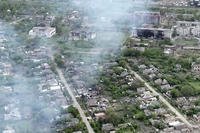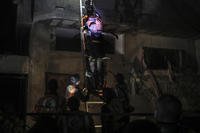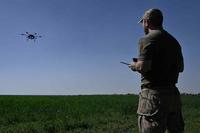
Last year, Noah wrote about a Defense Department nonlethal "pain ray" called the Active Denial System (ADS).
Now, British magazine New Scientist reveals that investigators testing the system are insisting tons of safety precautions that "raise concerns about how safe [ADS] would be if used in real crowd-control situations":
The experimenters banned glasses and contact lenses to prevent possible eye damage to the subjects, and in the second and third tests removed any metallic objects such as coins and keys to stop hot spots being created on the skin. They also checked the volunteers' clothes for certain seams, buttons and zips which might also cause hot spots.
The ADS weapon's beam causes pain within 2 to 3 seconds and it becomes intolerable after less than 5 seconds. People's reflex responses to the pain is expected to force them to move out of the beam before their skin can be burnt.
But Neil Davison, co-ordinator of the non-lethal weapons research project at the University of Bradford in the UK, says controlling the amount of radiation received may not be that simple. "How do you ensure that the dose doesn't cross the threshold for permanent damage?" he asks. "What happens if someone in a crowd is unable, for whatever reason, to move away from the beam? Does the weapon cut out to prevent overexposure?"
During the experiments, people playing rioters put up their hands when hit and were given a 15-second cooling-down period before being targeted again. One person suffered a burn in a previous test when the beam was accidentally used on the wrong power setting.
So what's this got to do with the hockey picture? The real problem here is that people respond to very differently to varying levels of force.
When I was a lowly research drone at CSIS, I had the opportunity manage a project on nonlethal weapons. During one of our meetings, Dr. John Kenny -- a member of the DOD Joint Nonlethal Weapons Directorate's Human Effects Advisory Panel (HEAP) -- gave an amazing briefing on human variability that included these two examples to illustrate the challenge facing "nonlethal" weapons:
On May 9, 1998, police used twelve shots to kill former NFL player Tom Nevile. One day later, St. Louis Blues' captain Chris Pronger (above, right) collapsed after a hockey puck struck him in the chest during an NHL playoff game.
Kenny still believed the problem of human variability could be managed, but I don't know.
We started using the phrase "less lethal weapons" after his talk.
-- posted by Jeffrey Lewis.








